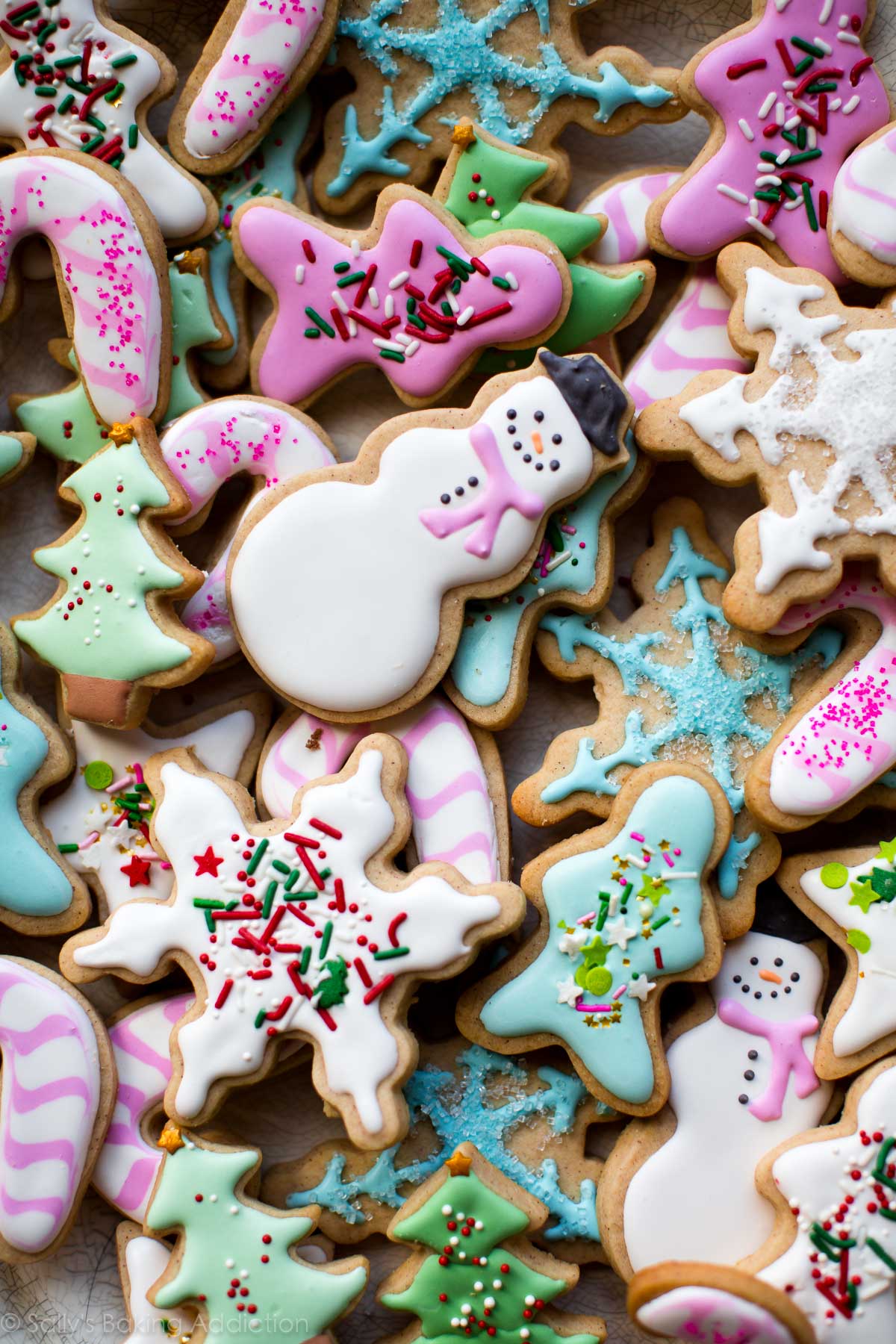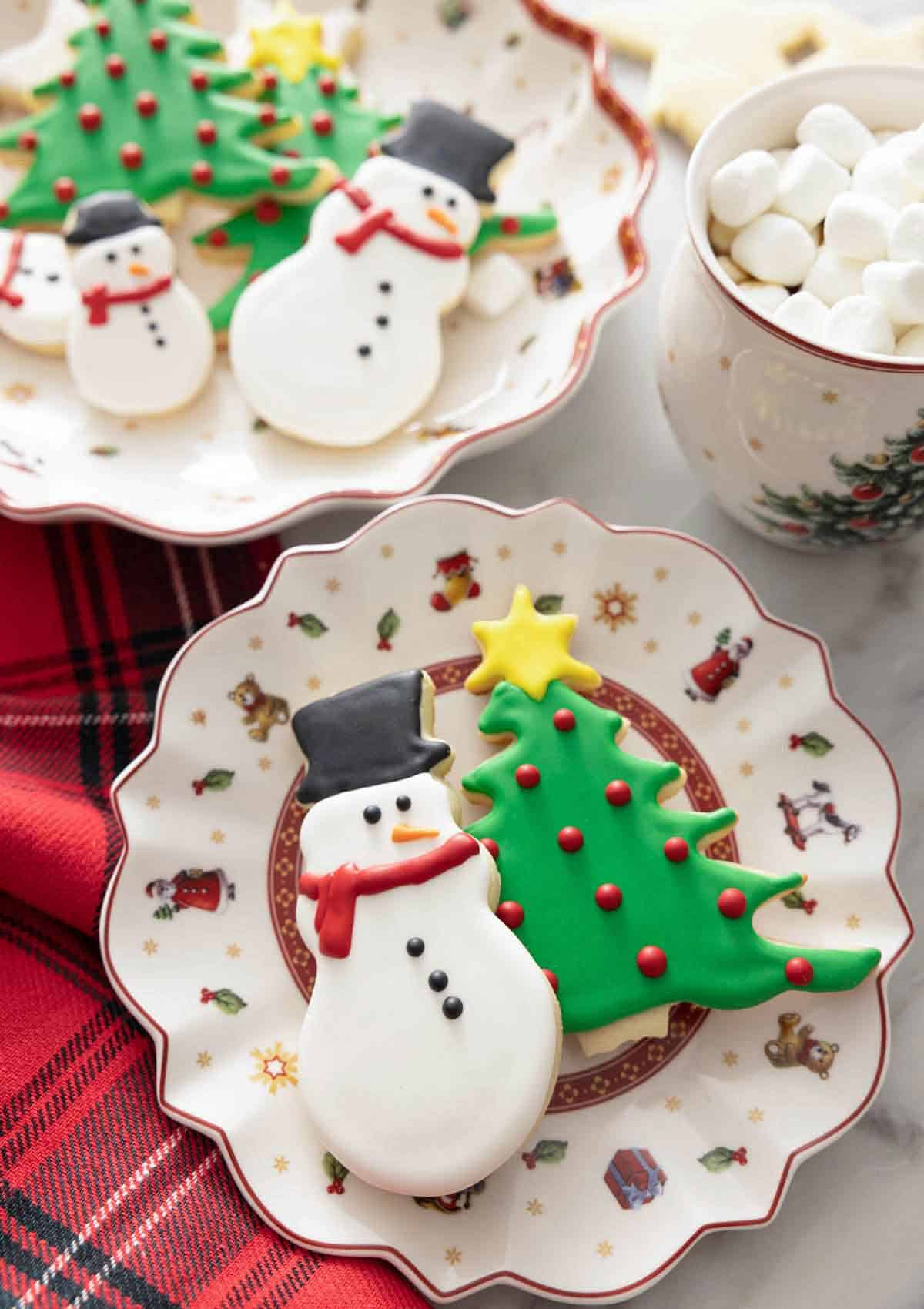What is Royal Icing?
Royal icing is a versatile and stunning icing made primarily from egg whites and powdered sugar. It hardens into a smooth, glossy finish, making it ideal for decorating cookies and cakes. As an avid baker, I have found that mastering royal icing opens up a world of creative possibilities. Its ability to hold intricate designs and vibrant colors ensures that baked goods stand out, whether for special occasions or everyday enjoyment.
History of Royal Icing
The origins of royal icing can be traced back to the 16th century when it was used primarily to decorate wedding cakes. As time went on, its popularity expanded, making it a staple for holiday cookies and various celebrations. Today, both professional bakers and home chefs alike use royal icing to create breathtaking decorations.
Ingredients for Royal Icing
Main Ingredients
- Egg whites (pasteurized if desired)
- Powdered sugar
- Lemon juice or vinegar (optional, for flavor and stability)
Alternative Ingredients
- Merengue powder as a substitute for egg whites
- Vegetarian alternatives (using aquafaba)
Comparison Table of Royal Icing Ingredients
| Ingredient | Pros | Cons |
|---|---|---|
| Egg Whites | Traditional, stable | Raw egg concerns |
| Merengue Powder | Easy to use, safe | Can be less rich in flavor |
| Aquafaba | Vegan-friendly | May require adjustments in texture |

How to Make Royal Icing
Making royal icing is remarkably simple! Here’s a basic recipe that I follow:
Ingredients:
- 2 large egg whites
- 3-4 cups powdered sugar
- 1 tsp lemon juice or vinegar (optional)
Instructions:
1. In a bowl, mix egg whites until frothy.
2. Gradually add powdered sugar while mixing until you achieve a smooth consistency.
3. Add lemon juice or vinegar if desired and mix until incorporated.
4. Adjust icing with more sugar or water as needed.

Consistency Matters
The key to perfect royal icing lies in achieving the right consistency. Here are the types:
- Flooding Consistency: Thin enough to spread but thick enough to hold its shape.
- Outline Consistency: Thick enough to hold peaks and outline shapes.
- Stiff Consistency: Ideal for detailed decorations like flowers and intricate designs.
Techniques for Decorating with Royal Icing
Basic Techniques
- Flooding: This involves filling in shapes with a more watery royal icing, allowing it to spread to the edges.
- Outlining: Use thicker icing to create borders before flooding.
- Piping: Perfect for creating flowers, letters, and more intricate designs.

Advanced Techniques
- Wet on Wet: This technique features applying wet icing onto wet icing for blending colors.
- Marbling: Swirl colors together for beautiful marbled effects.
- Painting: Once dried, you can use food colors to paint designs over royal icing.
Royal Icing for Various Occasions
Holiday Cookies
Royal icing is synonymous with holiday cookie decorating. From Christmas to Easter, it allows for endless creativity. I remember the joy of creating spooky Halloween cookies adorned with ghostly whites and eerie colors!

Weddings and Special Events
For weddings, royal icing embellishments on cakes can elevate the overall presentation. I once attended a wedding where the cake was an absolute masterpiece covered in intricate royal icing lace work.
Everyday Decor
Don’t reserve royal icing just for special occasions! I frequently decorate cookies for weekend family gatherings or even casual get-togethers with friends.

Common Mistakes in Royal Icing Decoration
Not Aiming for Right Consistency
One of the most common mistakes is not achieving the desired consistency. Too thin, and your flooding will run off the edges; too thick, and you won’t be able to fill in shapes properly.
Ignoring Drying Times
Patience is key! It’s crucial to allow sufficient drying time between layers, especially for complex designs.

Improper Storage
When storing royal icing, ensure it’s covered tightly to prevent it from drying out. I learned this the hard way with a batch of icing that turned into a hard lump overnight!
Tips for Successful Royal Icing Decorations
- Always use powdered sugar that is free of lumps.
- Invest in quality food coloring for vibrant shades.
- Practice makes perfect! Don’t be discouraged by initial mistakes.

Cleaning Up After Decorating
Cleaning up can be a daunting task after a big decorating session. Here are a few tips:
- Soak pipping bags and tips in warm soapy water immediately after use.
- Use a damp cloth to wipe down surfaces before the icing hardens.
- Keep a spray bottle of water handy to prevent royal icing from drying on tools.
FAQs About Royal Icing Decorations
How long does royal icing take to dry?
Royal icing generally takes about 6-8 hours to dry completely. However, larger decorations may require a full day to harden.
Can I store royal icing?
Yes, you can store royal icing in an airtight container. It can last up to two weeks in the fridge. Just ensure it is covered tightly to avoid hardening.
Can I use royal icing on cakes?
Absolutely! Royal icing can be used to decorate cakes as well. However, it works best on fondant-covered cakes where it can adhere more easily.